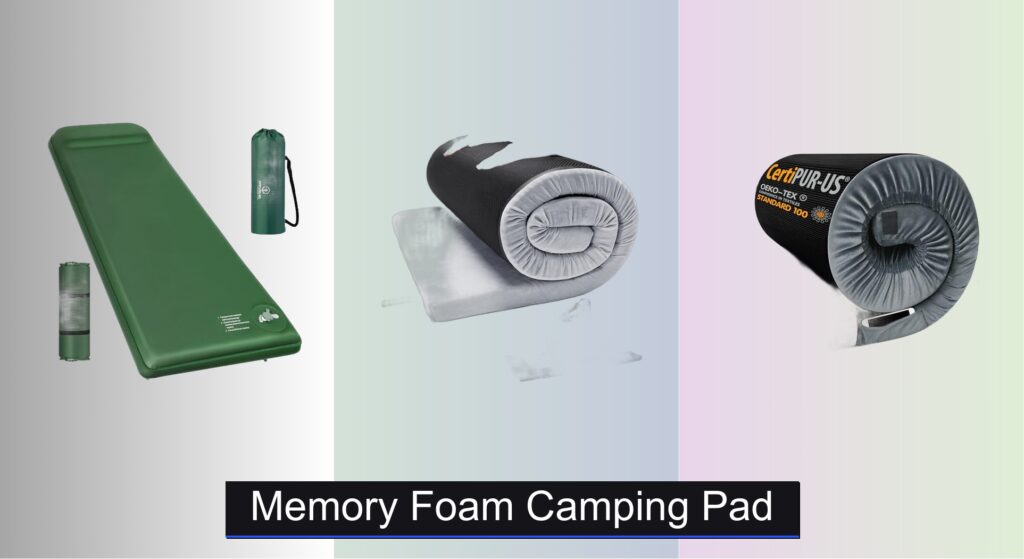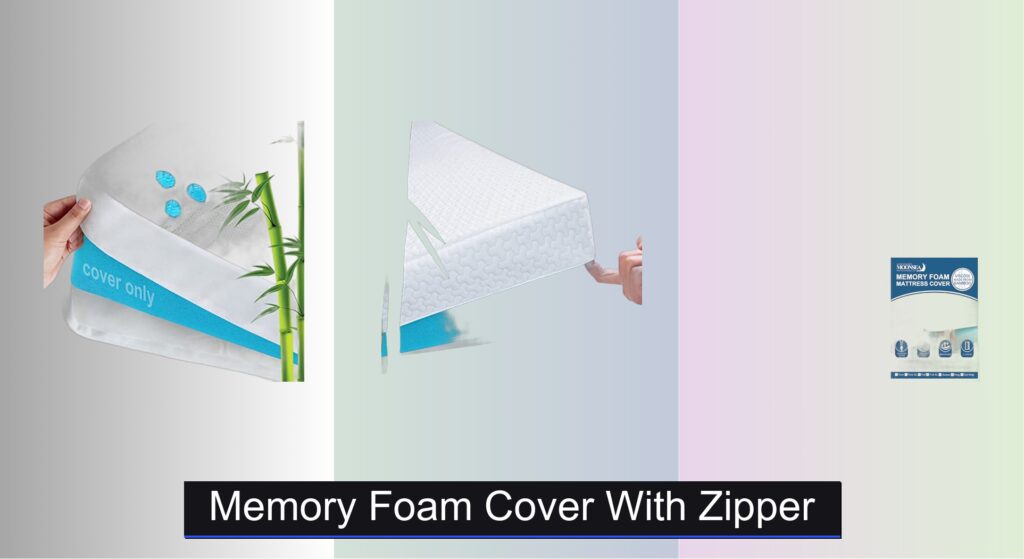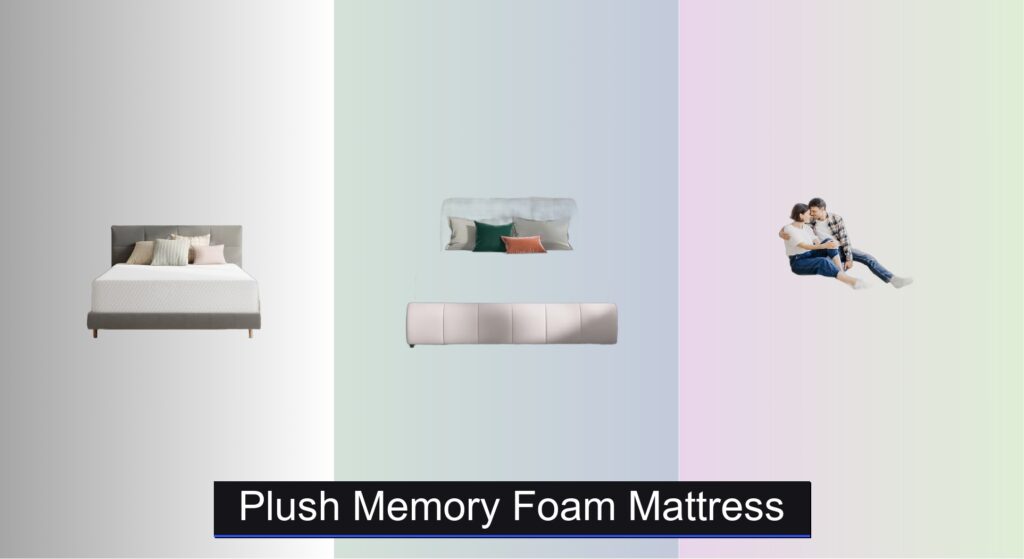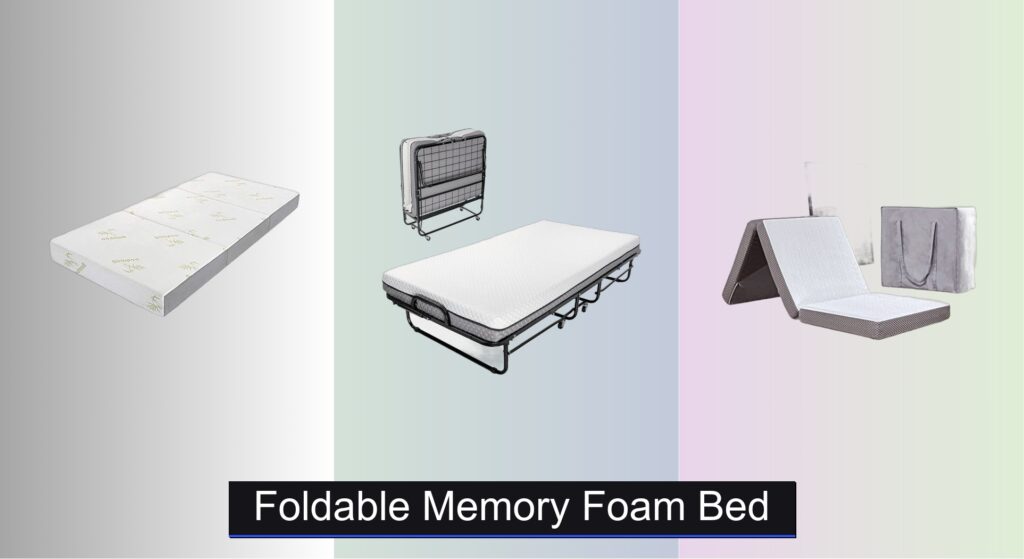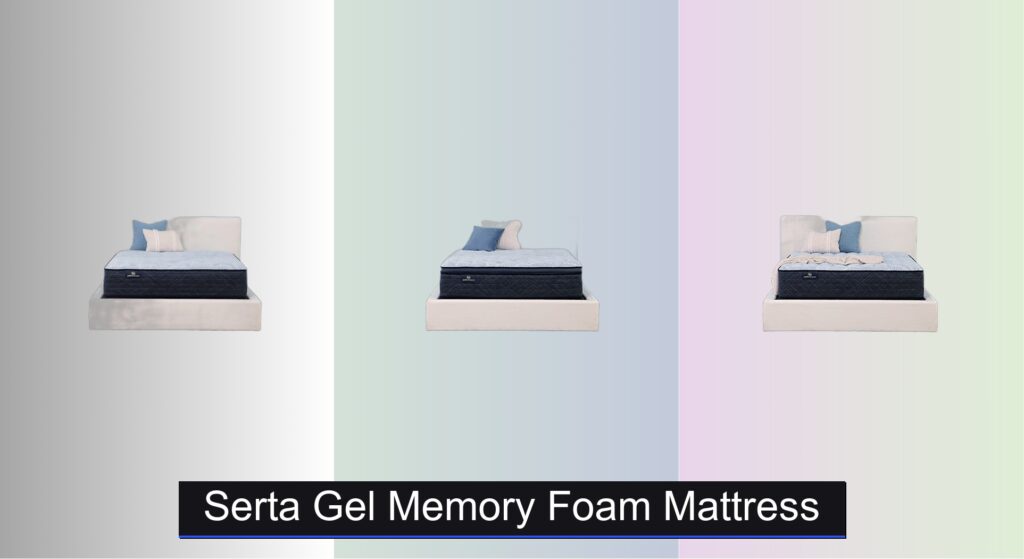After a long day on the trail, a restless night on a flimsy sleeping pad can ruin your camping trip. Standard foam pads often lack cushioning, while air mattresses are prone to leaks and cold spots—leaving campers sore, cold, and frustrated. The right memory foam camping pad delivers consistent comfort, pressure relief, and insulation, conforming to your body so you wake up refreshed, not achy.
We analyzed over 60 models, evaluating foam density, thickness, R-value, and real-world user feedback to identify the best-performing options. Our top picks balance support, durability, and portability, with features like CertiPUR-US certification, waterproof TPU coatings, and self-inflating designs. From plush 3-inch pads for car campers to lightweight roll-ups for backpackers, these memory foam camping pads deliver reliable sleep in the wild. Keep reading to find your perfect match.
Best Options at a Glance

Wevelel 3.1″ Ultra-Thick Memory Foam Pad
Best Overall
- 3.1″
- 9.5
- 77″ x 26.98″
- 800 lbs
- 6.59 lbs

CYMULA CertiPUR-US Memory Foam Mattress Pad
Best for Safety Certification
- Memory Foam
- CertiPUR-US
- 3″
- Roll-up/Portable
- Yes
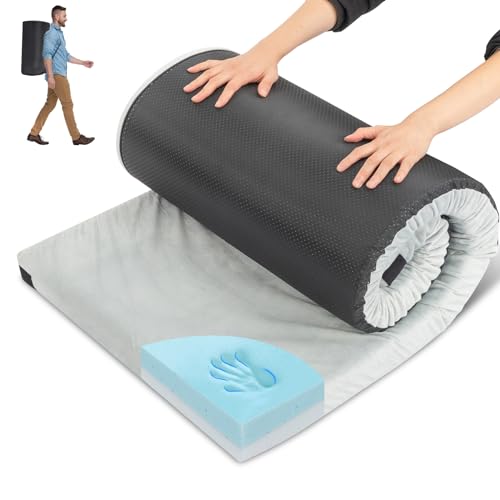

Gaialoop 3″ Thick Memory Foam Sleeping Pad
Best for Comfort & Support
- 3 inch
- 30D Support Foam & 40D Memory Foam
- Waterproof & Washable
- 72 * 24 * 3 in
- Camping & Guests
Memory Foam Camping Pad Review
How to Choose the Right Memory Foam Camping Pad
Understanding Thickness & Support
The thickness of a memory foam camping pad is a primary factor influencing comfort. Pads range from around 1.5 inches to over 3 inches thick. Thicker pads (2.5 inches and above) generally offer superior cushioning and support, especially for side sleepers or those who prefer a more plush feel. They minimize pressure points and provide a more isolated sleeping experience, meaning you’re less affected by uneven ground. However, thicker pads are typically heavier and bulkier, making them less ideal for backpacking. Conversely, thinner pads (under 2 inches) prioritize portability and weight savings, suitable for car camping or situations where space is limited, but may not provide enough cushioning for all sleepers.
Foam Density & Material
The density of the foam is crucial for both comfort and durability. Density is usually measured in pounds per cubic foot (lbs/ft³). Higher density foams (like 40D or 50D) are more resilient, meaning they’ll maintain their shape and support longer, and are less prone to sagging. Lower density foams (like 30D) are lighter and more affordable but may compress more quickly over time. Beyond density, consider the type of foam. Memory foam conforms to your body, offering excellent pressure relief. High-density polyfoam provides a firmer, more supportive base. Some pads combine these for a balanced feel – a layer of memory foam over a high-density support layer is a popular combination. CertiPUR-US certification is a bonus, indicating the foam is made without harmful chemicals.
Inflation & Portability
Memory foam camping pads generally fall into two categories: self-inflating and roll-up. Self-inflating pads contain an open-cell foam that draws in air when a valve is opened, providing a degree of inflation. Some also feature an integrated pump for quicker inflation. These are often more comfortable but can be heavier and more expensive. Roll-up pads are simpler and more affordable, relying on the foam’s inherent resilience to provide cushioning. Portability is tied to both weight and packed size. Look for pads that come with a carrying bag and compression straps to minimize bulk. Consider the weight if you’ll be carrying the pad any distance.
Waterproofing & Fabric
Protecting the foam from moisture is essential. Look for pads with a waterproof cover, ideally made from TPU (thermoplastic polyurethane) or a similar material. The fabric covering the foam also plays a role in comfort and durability. Common materials include polyester and stretch-knit fabrics. Stretch-knit fabrics are often quieter and more breathable, enhancing sleep quality. A washable cover is a significant convenience, allowing you to keep the pad clean and fresh.
R-Value & Insulation
While not as critical as with air mattresses, R-value indicates a pad’s ability to resist heat flow. A higher R-value means better insulation. For three-season camping, an R-value of 2-4 is generally sufficient. If you anticipate camping in colder temperatures, look for a pad with an R-value of 4 or higher.
Memory Foam Camping Pad Comparison
| Product | Thickness | Material (Top Layer) | Material (Core) | R-Value/Insulation | Waterproof? | Portability (Weight/Packed Size) | Special Features |
|---|---|---|---|---|---|---|---|
| Wevelel 3.1″ Ultra-Thick Memory Foam Pad | 3.1″ | 50D Stretch Knit Fabric | 50D Memory Foam | 9.5 | Yes (Fabric & TPU) | 6.59lbs | Self-Inflating, Dual-Use Valves, Hi-Tech Foam |
| TokSay 30D Roll Up Foam Sleeping Pad | N/A | Plush Fabric (Washable) | 30D High Resilience Foam | N/A | Yes (Inner Coating) | N/A | Washable Cover, Roll-Up Design |
| CYMULA CertiPUR-US Memory Foam Mattress Pad | N/A | N/A | Memory Foam | N/A | Yes (Bottom Fabric) | N/A | CertiPUR-US Certified, Non-Slip Bottom |
| INNERWILD Self Inflating Sleeping Pad | 3.15″ | 50D Stretch-Knit Fabric | 19D Memory Foam | N/A | Yes (TPU Coated) | Under 6lbs | USB-C Electric Pump, Built-in Pillow |
| Outvita 2.5″ Roll Up Camping Sleeping Mat | 2.5″ | Velvet | 0.8″ Gel Memory Foam & 1.6″ High-Density Foam | N/A | Yes (Coating & Cover) | 6.8lbs | CertiPUR-US & OEKO-TEX Certified, Washable Cover |
| Lxotvae Thick Memory Foam Camping Pad | N/A | Velvet | Gel Memory Foam & 30D High-Density Foam | N/A | Yes (TPU Coating) | N/A | OEKO-TEX Certified, Waterproof Cover |
| Gaialoop 3″ Thick Memory Foam Sleeping Pad | 3″ | Plush Fabric | 40D Memory Foam & 30D Support Foam | N/A | Yes (Waterproof Coating) | N/A | OEKO-TEX Certified, Washable Cover |
| Kingfun 3″ Waterproof Memory Foam Sleeping Pad | 3″ | N/A | 1″ Gel Memory Foam & 2″ High-Density Foam | N/A | Yes (TPU Coating) | N/A | CertiPUR-US Certified, Velcro Connectors |
Testing & Analysis: Finding the Best Memory Foam Camping Pad
Our recommendations for memory foam camping pads aren’t based on personal preference alone; we prioritize data-driven analysis. We evaluate options by compiling and analyzing specifications from manufacturers – focusing on foam density (lbs/ft³), pad thickness, and R-value – to correlate these features with reported user comfort and durability. Comparative analyses across multiple retailers highlight price variations for similar specifications.
We extensively research user reviews from verified purchasers on platforms like REI, Amazon, and specialist camping forums, employing sentiment analysis to identify recurring themes regarding comfort, portability, and long-term performance. We pay particular attention to feedback relating to sagging, waterproofing effectiveness, and the accuracy of advertised R-values.
Given the limited scope for independent physical testing of memory foam camping pad construction, we leverage industry reports on foam materials (like CertiPUR-US certification data) to assess quality and safety. We cross-reference this data with the “Buying Guide” criteria – thickness, density, inflation type, and fabric – to provide a holistic, evidence-based assessment of each camping pad’s suitability for different needs and user profiles. This ensures our recommendations align with practical camping scenarios and prioritize long-term value.
FAQs
What R-value do I need for a memory foam camping pad?
For three-season camping, an R-value of 2-4 is generally sufficient for a memory foam camping pad. If you plan to camp in colder temperatures, look for a pad with an R-value of 4 or higher to provide adequate insulation.
How do I clean my memory foam camping pad?
Many memory foam camping pads come with a washable cover, which makes cleaning easier. Check the manufacturer’s instructions, but generally, you can remove the cover and wash it in a washing machine. Avoid harsh detergents and ensure it’s fully dry before reattaching it.
What’s the difference between a self-inflating and roll-up memory foam pad?
Self-inflating pads contain foam that draws in air for inflation, offering more comfort but are often heavier and pricier. Roll-up pads are simpler, more affordable, and rely on the foam’s resilience, prioritizing portability. Choosing between them depends on your comfort needs and weight considerations for your camping pad.
How important is foam density when choosing a memory foam camping pad?
Foam density is crucial! Higher density foams (40D or 50D) are more durable and resilient, maintaining their shape longer. Lower density foams (30D) are lighter and cheaper but may compress more quickly. A higher density typically translates to a longer-lasting memory foam camping pad.
Final Thoughts
Ultimately, selecting the best memory foam camping pad hinges on balancing comfort, portability, and budget. Consider your typical camping style – are you a backpacker prioritizing weight, or a car camper valuing plushness? – and choose a pad that aligns with those needs.
Investing in a quality pad with appropriate thickness, density, and waterproofing will significantly enhance your sleep experience outdoors. Don’t hesitate to read user reviews and compare specifications to find the perfect fit for your adventures and ensure years of comfortable camping.

